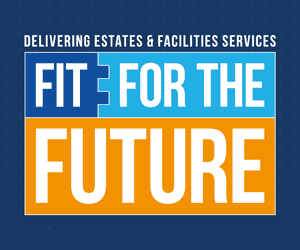The Workforce Strategy for Estates and Facilities (E&F) staff within the NHS is due to be released later this year. Speaking at IHEEM’s Digital Week yesterday (October 7), Fiona Daly, Sustainability and EFM Workforce Lead at NHS England / Improvement (NHSE/I) outlined the three core, strategic priorities around which the strategy is based. These are:
• Embedding quality and diversity
• Developing the current workforce
• Building the next generation of EFM workforce.
The opportunity
The hospital building programme and other capital schemes that are now unfolding across England are an opportunity for the NHS to attract new skills and talent into the health service. The drive for technology and digital transformation that has accelerated during the pandemic and the commitment made to Net Zero carbon for NHS England by 2040 pose challenges. However, they can also be used as leverage to attract the new skills and talent the health service will need to deliver all of these programmes by positioning the NHS in a leading role.
Dr Tedros Adhanom Ghebreyesus, Director General of the World Health Organization (WHO), acknowledged that in committing its operations to net zero carbon the NHS is taking a lead on climate change which is a significant issue that will impact on human health.
He said: “Cutting carbon emissions is essential to protect health, everywhere in the world. I welcome the leadership of the largest single health system in the world, the National Health Service in England, in committing to be carbon neutral in its own operations by 2040, and to drive emissions reductions in its suppliers and partners. Health is leading the way to a greener, safer planet.”
The core priorities of the EFM Workforce Strategy also aim to position the NHS as a leader in quality and diversity, not just setting the standard in healthcare, but setting the standard in estates and facilities management. The combination of these steps and the ‘once-in-a-lifetime’ opportunity of the capital investment programme should inspire people to want to join what is already a great team.
Furthermore, every single person who has enjoyed a career within NHS Estates & Facilities has a role to play, by talking to others and explaining what they do and why they love working for the NHS, talking to students in schools and colleges through schemes such as ‘Step into the NHS’ and emphasising the non-clinical roles and career opportunities that exist.
Also in the strategy
The strategy will also include measures of success, introduce accountability and map-out career progression.
The strategy will have four quantifiable measures:
• 35-40 applicants per role advertised and 95% acceptance rate
• CQC target for 100% of the estate to be rated as ‘good’ or ‘outstanding’ with 25% as ‘outstanding’
• All organisations to have a voluntary target for improving diversity at all levels and all roles
• 200% increase in best practice publications.
It was felt that accountabilities have been absent in the past, so these have been built in, for the centre, the organisation/ICS and the workforce.
Career progression aligns with work HEFMA and IHEEM have both been developing around the career road map for E&F professions.
A workforce board is to be established to secure ongoing engagement with healthcare organisations, trade bodies and government bodies on a rotational basis so all can be involved. The support of trade bodies, including HEFMA and IHEEM will, Fiona admitted, be “critical.” She added that our aims are aligned, we are all trying to achieve the same results.
Challenges
Fiona continually stressed that the team at NHSE/I is listening to the concerns of Estates and Facilities professionals across the NHS about workforce issues, including difficulties in recruiting, ongoing staff and skills shortages and lack of resource for training and development of E&F professionals. However, she was very candid in admitting that there is as yet no guarantee that central funding will be available. She said she is “optimistic” that a way will be found to secure funding into the system, but it may require some lateral thinking. “I give you my word we will do everything we can to get funding into the system,” she said.
The EFM Workforce Strategy is now undergoing the final internal approval stages ahead of its release.










